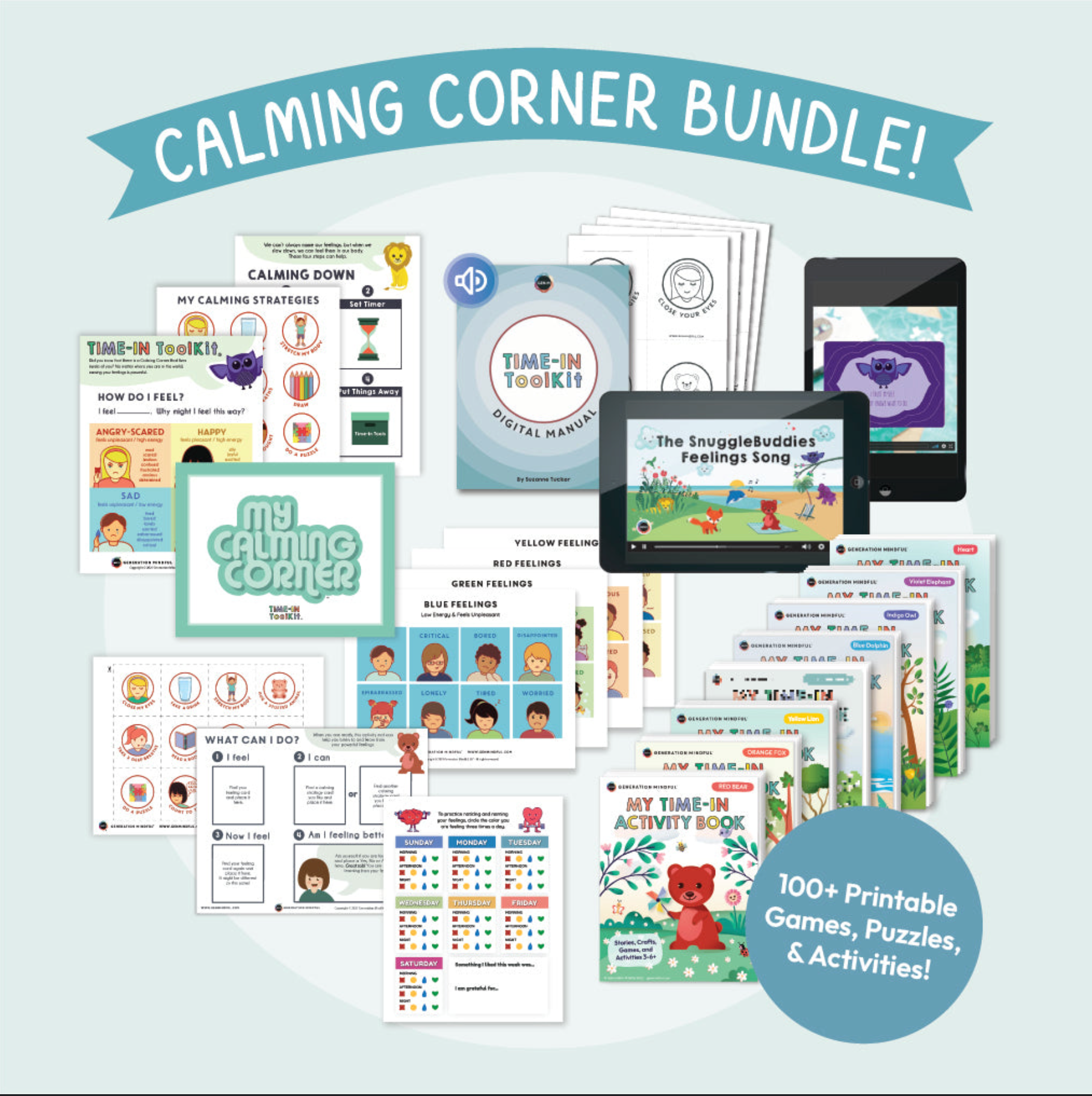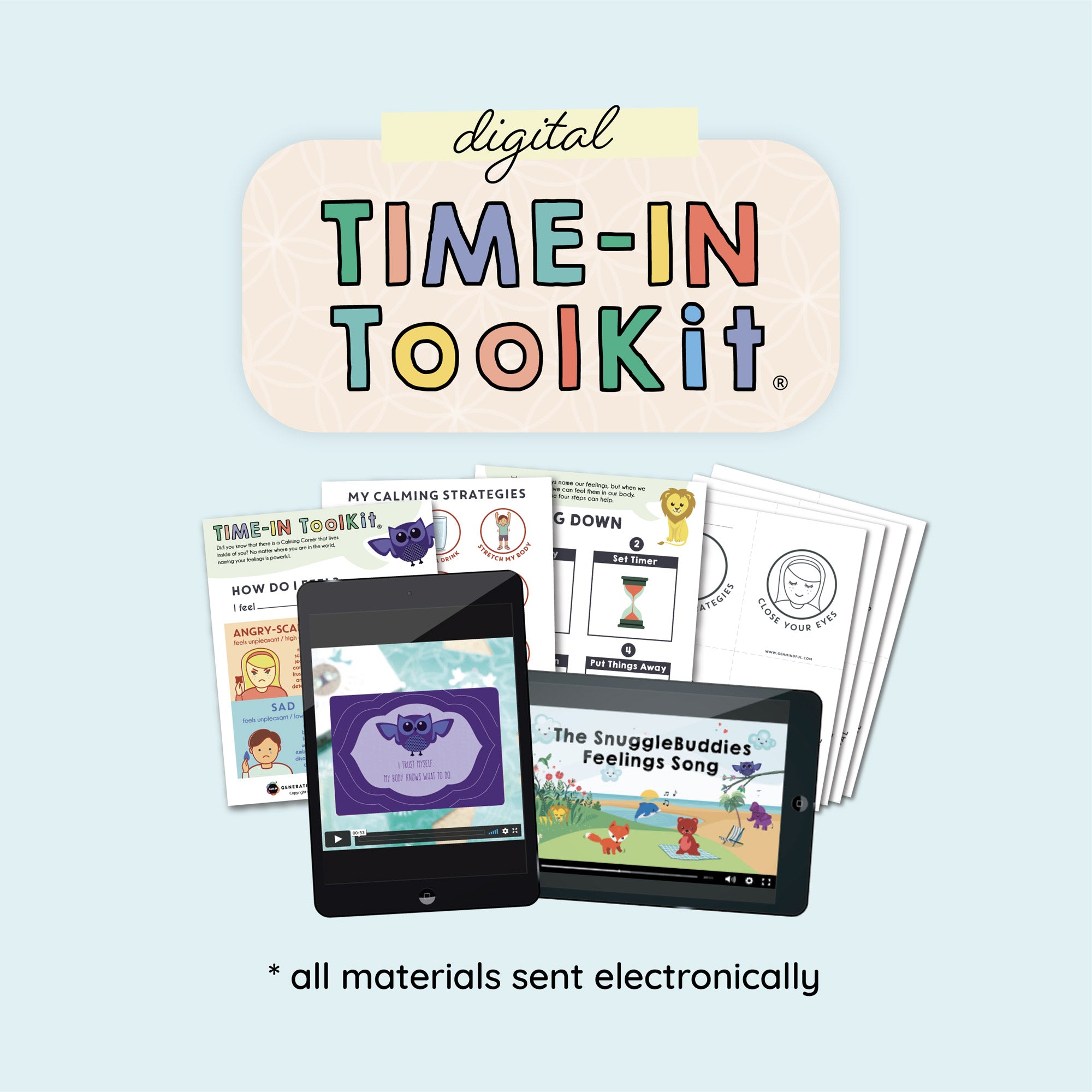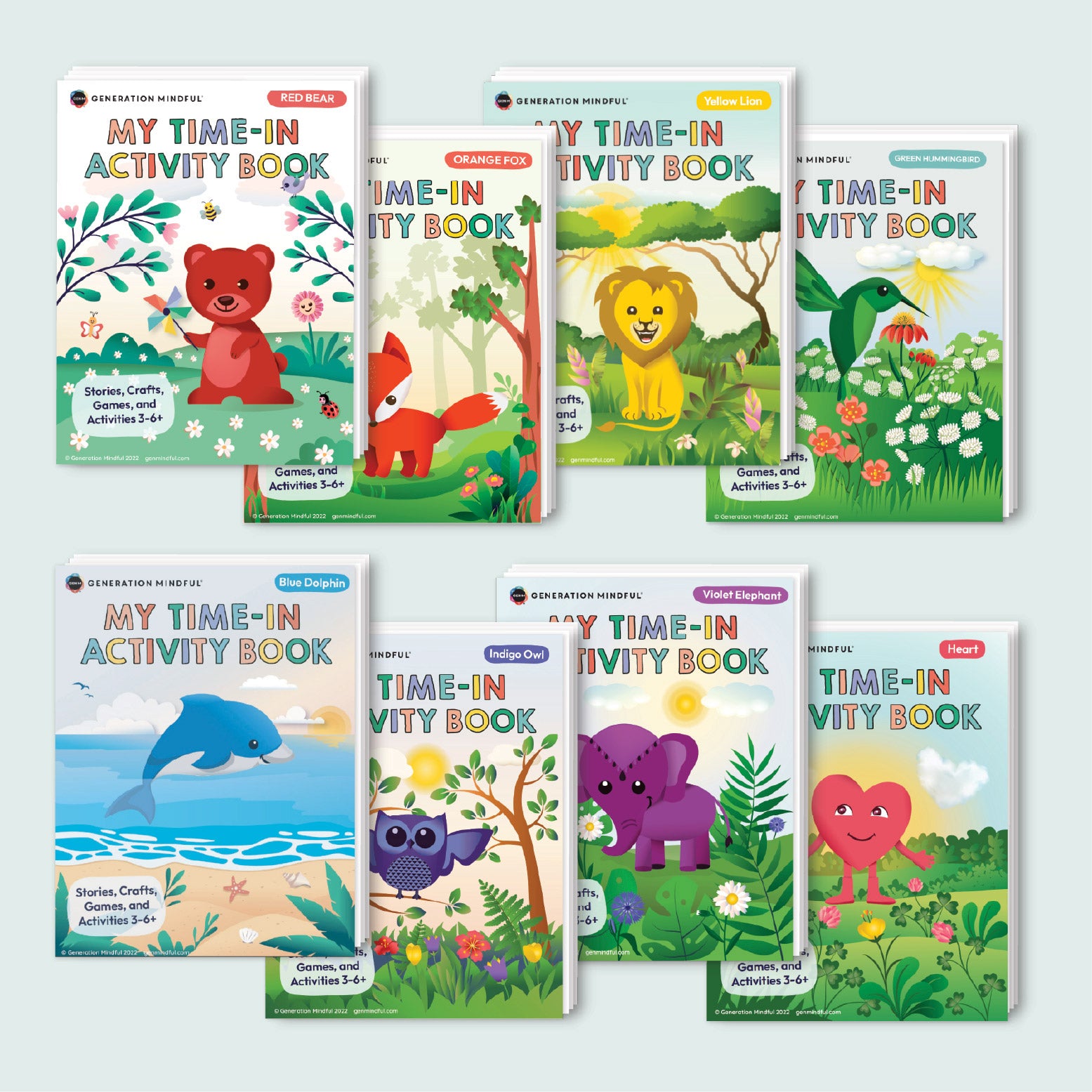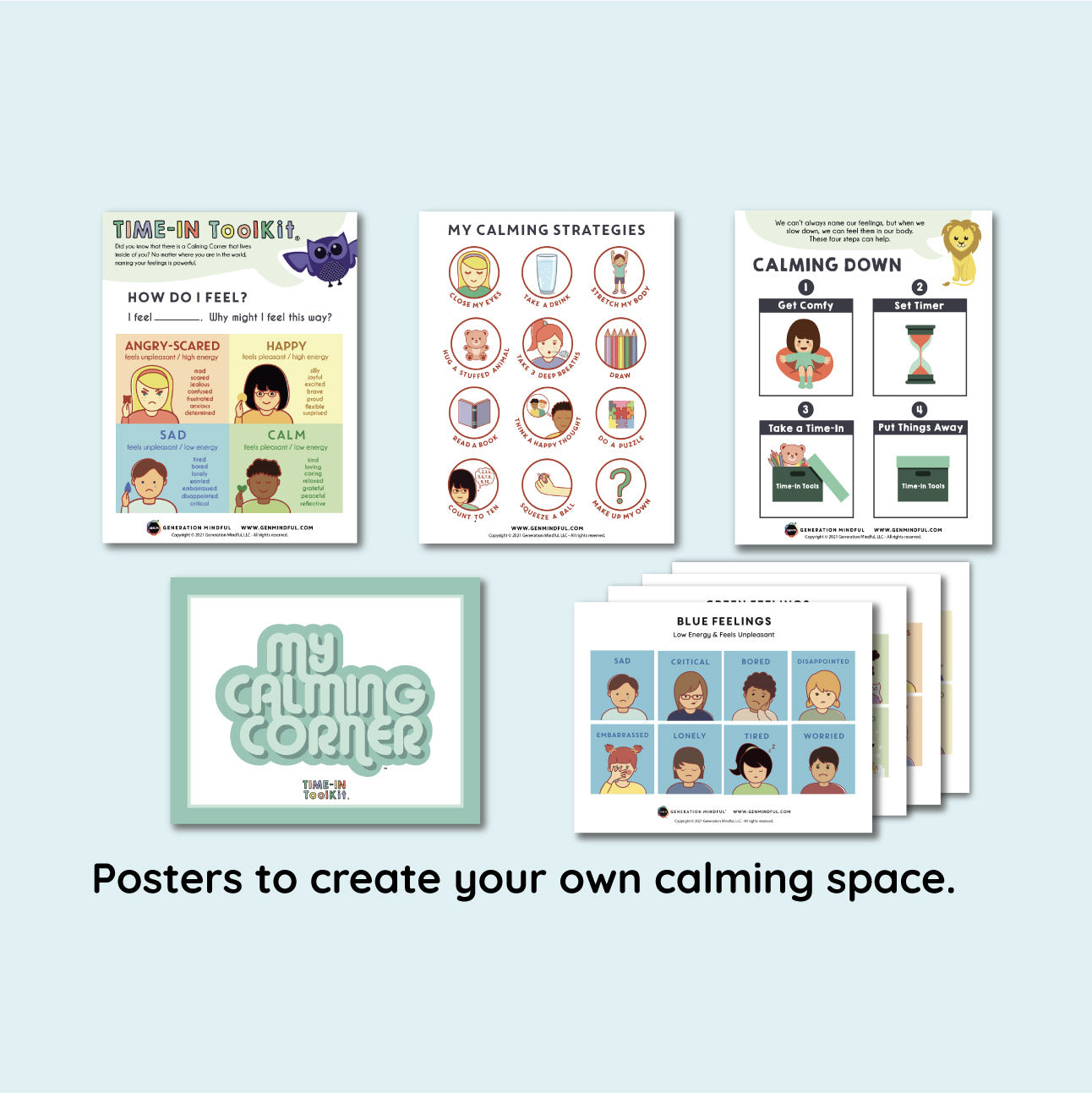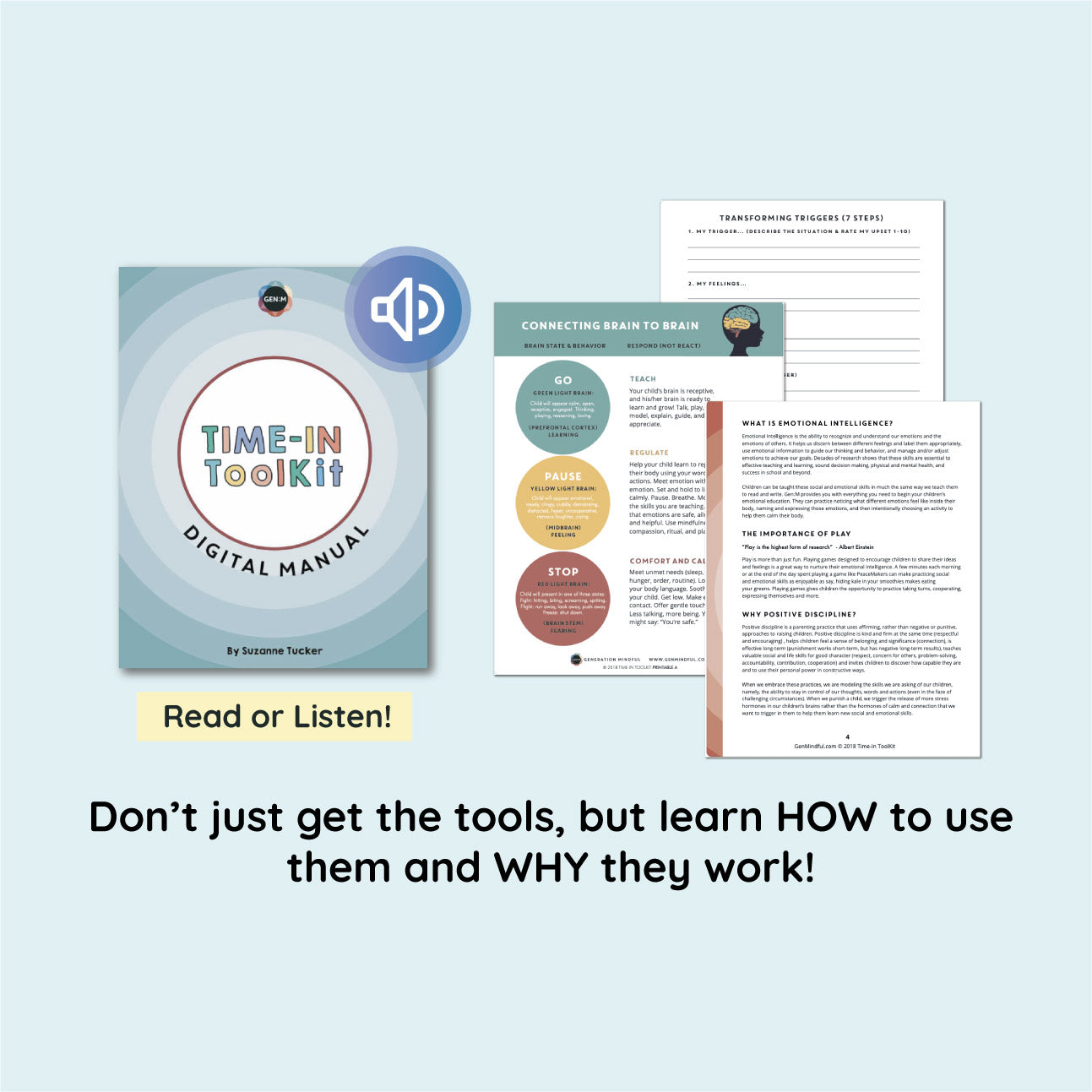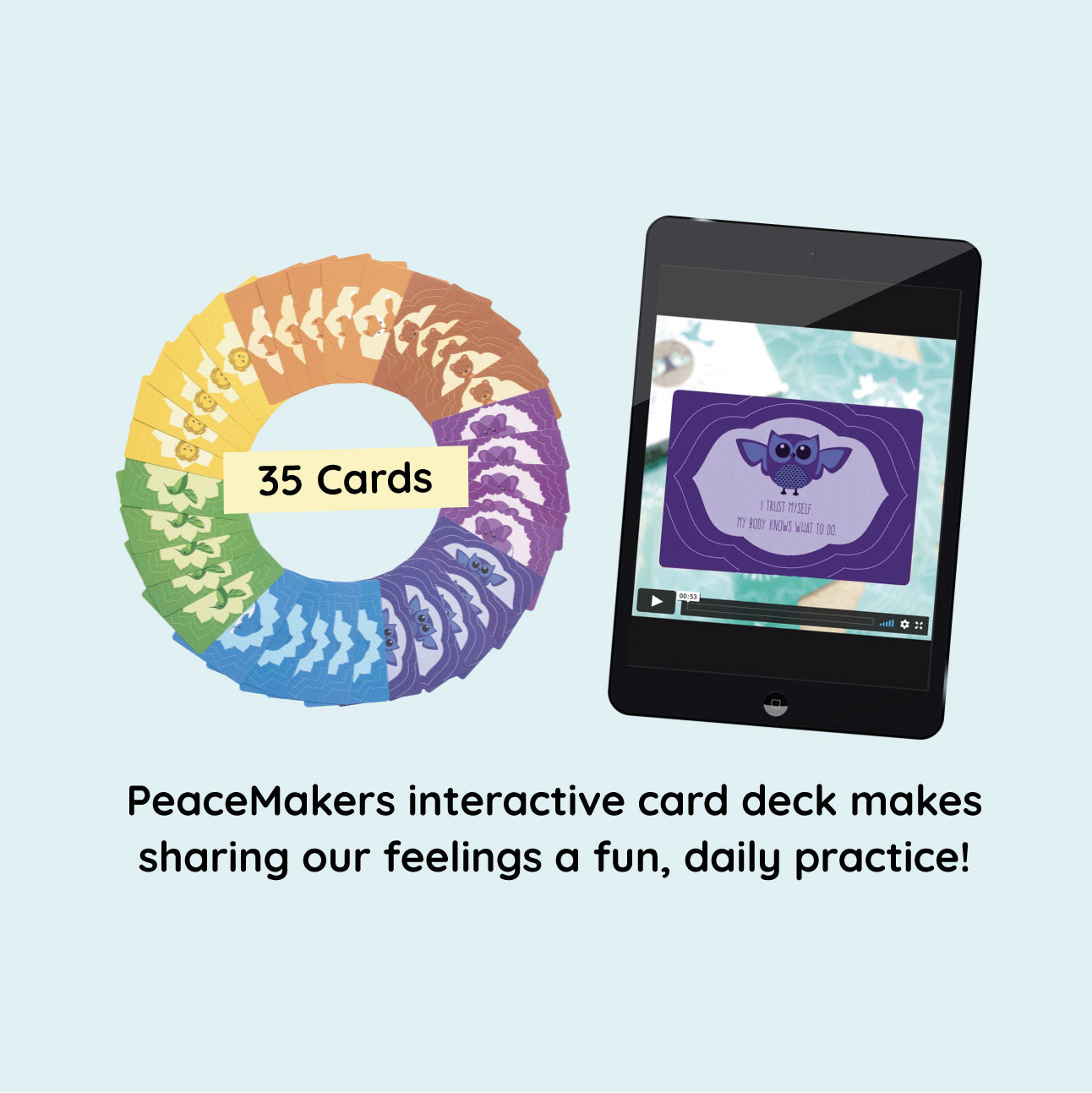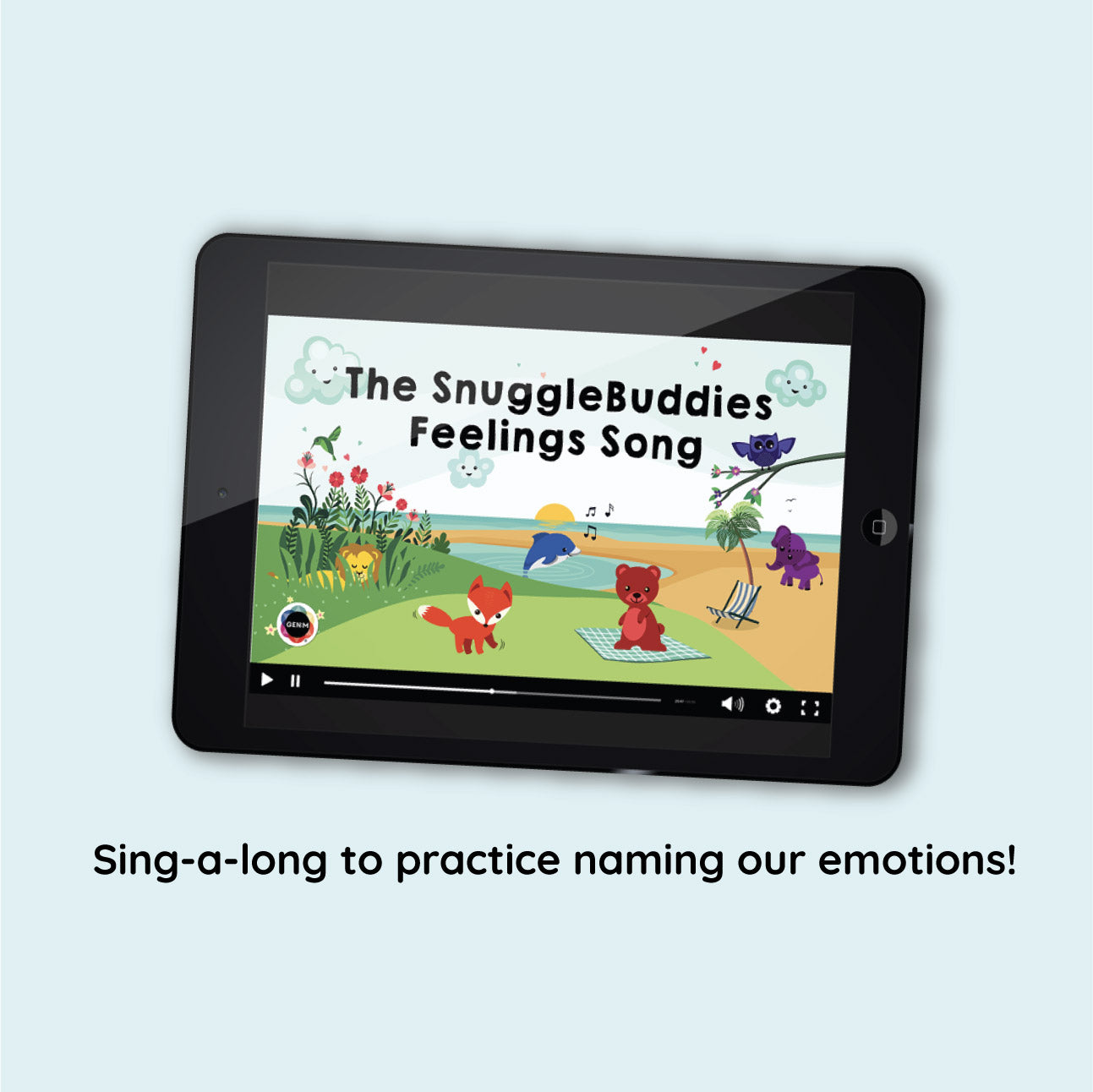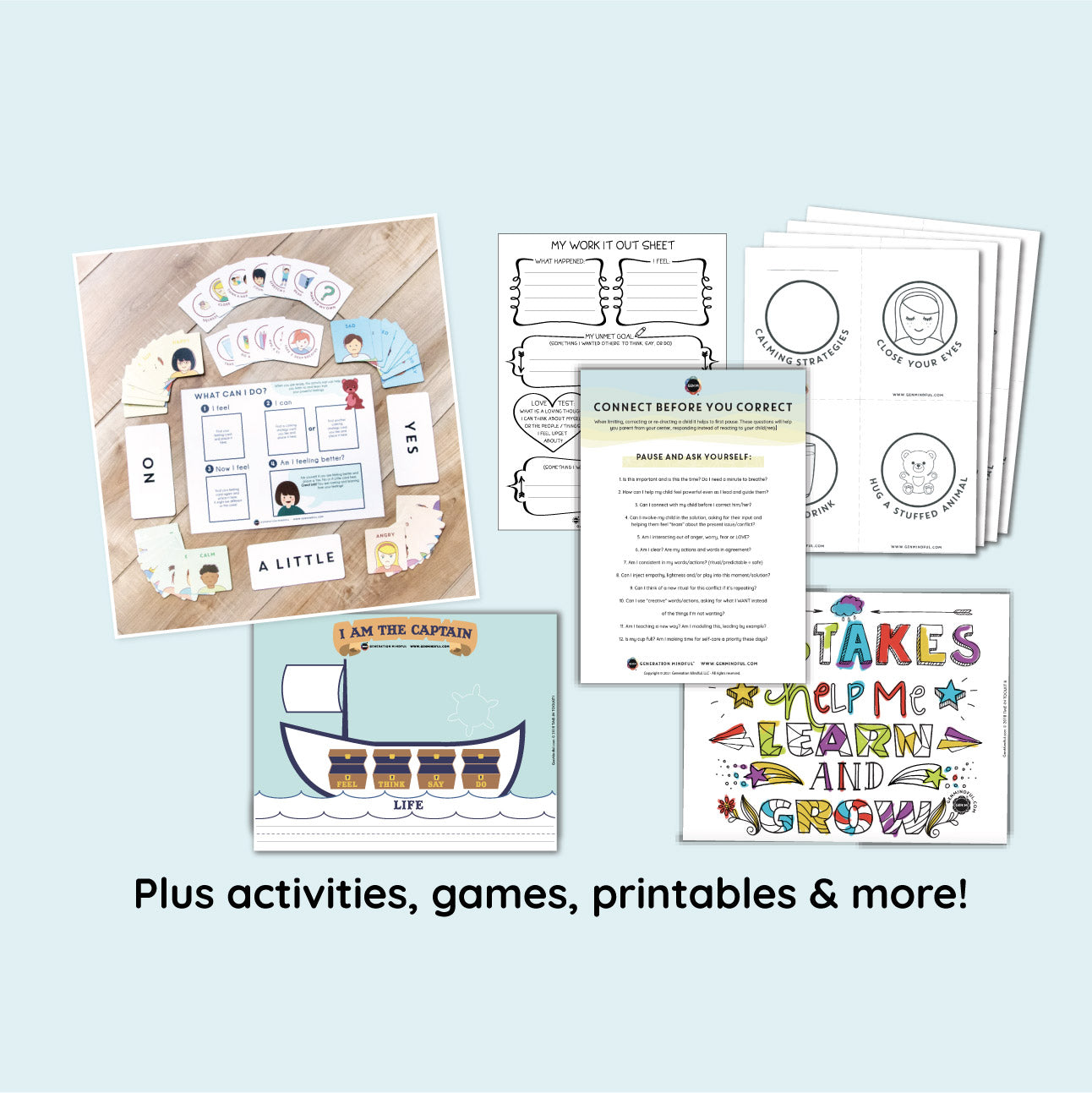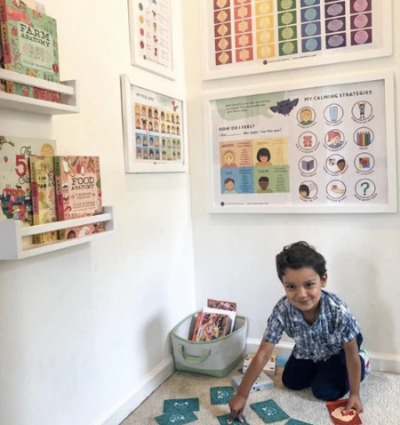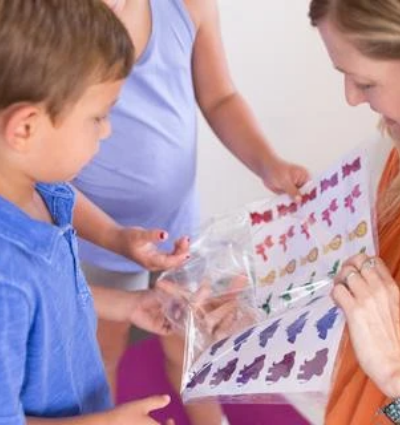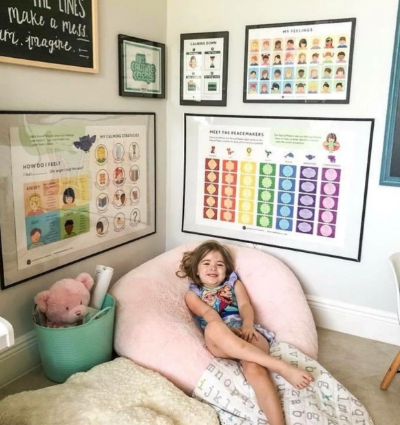Our world-famous Time-In ToolKit™ to create a Calming Corner is now available in digital format, no shipping required. Get started today with instant access!
Use Time-Ins To Transform Challenging Behaviors
Children often communicate feelings like overwhelm, fear, anger, and sadness by acting out or having what is commonly referred to as a tantrum or meltdown.
Instead of telling children, “You did bad, so now you need to go away,” which is the message time-outs send, we can assure children, with our words AND our actions, that “When you acted out, you were FEELING bad. Let’s learn from those feelings together.”
Our internationally-acclaimed Time-In ToolKit brings the science of emotional regulation into fun, daily practices that will benefit the entire family!

What's included in my ToolKit?
Your Digital ToolKit includes instant access to everything you need to create your Calming Corner and start using Time-Ins!
✓ How Do I Feel? Poster
✓ My Calming Strategies Poster
✓ Calming Down Steps Poster
✓ My Calming Corner Poster
✓ What Can I Do? Activity Mat & Cards
✓ 32 Feeling Faces Printable Cards
✓ PeaceMaker’s Pick-A-Card Game (video)
✓ SnuggleBuddies Feelings Song (video)
✓ Time-In ToolKit™ Digital Manual
You'll also get:
- BONUS Time-In ToolKit™ Manual Audio Book
- BONUS My Calming Strategies Coloring Book
- BONUS 10 Printable Activity Sheets
- BONUS Connect Before You Correct Printable
What's a Time-In?
Time-Ins are dedicated times to process and regulate our feelings and big emotions. Your Time-In Toolkit creates a safe space (or Calming Corner) for you and your child(ren) to play, learn, and grow your social-emotional skills with playful, evidence-based games & activities. We call this “Taking a Time-In.”

What are the benefits of Emotional Intelligence?
Let’s Teach Kids HOW to Feel. Children aren’t born knowing how to regulate their emotions any more than they are born knowing how to tie their shoes.
Social-emotional skills have been devalued, hushed, and overlooked for generations. But thanks to mounting research, we now know the benefits of nurturing emotional intelligence.
- Improved behavior and cooperation
- Better listening and communication
- Higher academic grades
- More empathy and kindness
- Resiliency and problem-solving skills
[Raver, Garner, & Smith-Donald 2007; Eggum et al. 2011] [Rivers et al. 2012]
How do I get started?
Your Time-In Starter Guide will walk you through the basics of taking a Time-In and setting up your Calming Corner, while the Digital Manual and Audio Book will explain the science behind emotional intelligence, positive discipline, and connection, and explore more ways to use your Calming Corner through fun Time-In activities.
You can view your digital toolkit on a device or (we recommend) printing out the components and laminating them for more durability. Wherever possible, we encourage using tangible tools to connect with your child and limiting the use of devices.

How is the Digital ToolKit different from the physical Time-In ToolKits?
Your Digital Time-In ToolKit is available immediately after purchase and is a consolidated, downloadable, and streamable version of our physical ToolKits. Our physical Time-In ToolKits are shipped to you and include high-quality posters, card decks, laminated activity mats, and more. (See actual customer Calming Corners using our physical ToolKits above!)
Our physical Time-In ToolKits are also available bundled with other Time-In tools like our SnuggleBuddies plushes and Heart's Treasure Hunt children's book.
Product Support
How is the Digital ToolKit different from the physical Time-In ToolKits?
Your Digital Time-In ToolKit is available immediately after purchase and is a consolidated, downloadable, and streamable version of our physical ToolKits, which are shipped to you and include high-quality posters, card decks, laminated activity mats, and more. (see actual customer Calming Corners using our physical ToolKits above!)
Our physical Time-In ToolKits are also available bundled with other Time-In tools like our SnuggleBuddies plushes and Heart's Treasure Hunt children's book.
You can view your digital toolkit on a device or (we recommend) printing out the components and laminating them for more durability. Wherever possible, we encourage using tangible tools to connect with your child and limiting the use of devices.
AT WHAT AGE DO KIDS UNDERSTAND EMOTIONS?
Studies suggest kids can grasp emotions as early as 4 months. Babies show preference or interest by looking at something for a longer period of time. In one study, infants were shown images of different facial expressions – ex. expressions of anger, sadness, or joy – and most of them spent more time looking at the “happy” photos. Many infants can tell the difference between how different emotions are expressed vocally by the age of 5 months.
In another study, infants were shown one single facial expression, but the emotional tone of voice changed. They started looking at the photo again immediately after the change of voice. For example, the baby was looking at a picture and hearing a happy voice. They lost interest in the photo and started looking elsewhere.
When the voice changed – i.e. became angry or sad, their focus returned to the picture, and vice versa. Children are sensitive to emotional changes in a voice and it is never too early to establish positive discipline practices in a home. For nurturing social-emotional skills in infants and young toddlers, we highly recommend starting with our transformative Online Positive Parenting Course.
HOW DO I TEACH MY TODDLER TO EXPRESS FEELINGS?
There are special games in the Time-In ToolKit that you can play with your kids to help them recognize feelings and foster empathy. Games are an engaging way to teach kids social competence and skills so they feel comfortable expressing their feelings. This is important because negative feelings will tend to dominate in many facets of their life in the absence of adequately developed social skills. For toddlers, “adequately developed social skills” means learning to play well with others, having the ability to show empathy, and being able to share things.
Children at the age of two normally show empathy – for example, a child this age will pat a crying child on the back to comfort him. There are many things you can do to help your child develop social and emotional skills. Children learn by imitating, which is why parents are such important role models. If your child sees you being helpful, sharing things and feelings, and being grateful, they will imitate you. Eventually, they will develop a firm grasp of how to interact with others both at home and outside it. Playing a fun game with them and saying “please” and “thank you” with a smile is a nice start.
It is essential to praise your child when they demonstrate good social behavior. This way, they understand which forms of behavior are praiseworthy and encouraged. They also feel better about themselves. This plays an important role in fostering a sense of emotional competence and empathy. Children become more mindful and thoughtful if a positive climate is created at home, in which they can share their feelings without fear of punishment.
HOW DO YOU TEACH CALMING STRATEGIES?
It’s never a good idea to wait until a tantrum to begin teaching a calming strategy. Calming strategies are best taught at non-stressful times and through playing games. The My Calming Strategies Poster, which is part of the Time-In Toolkit, presents different strategies that will help children notice, name, share, and regulate their bodies and their minds. Interacting with your child and allowing them to interact with peers is the best way to teach calming strategies and social competence.
I WANT TO INTRINSICALLY MOTIVATE MY CHILDREN. CAN YOU EXPLAIN HOW THE TOOLKIT DOES THIS AND HOW THIS IS DIFFERENT FROM CLIP CHARTS AND PUNISHMENT?
The Time-In toolKit is built around skill-building, and teaching children social and emotional skills via modeling, not by reward or punishment. The Time-In ToolKit replaces both the punitive and/or a "behavioral management approach" by nurturing emotional intelligence in both children and adults. The many skill-building activities that come inside each kit are nurtured through the primary relationships a child has --- with their parents, siblings, and teachers. The Time-In ToolKit encouraging people of all ages to notice, name, and express their thoughts and feelings. The animal stickers that come with the kit engage children and help them track which PeaceMakers cards they have pulled until they collect all 35, serving as a record of the learning that has occurred (Reggio Emilia). The stickers are not a reward nor are they given in exchange for a behavior. For more on PeaceMakers, the positive affirmations/mindfulness cards included in each kit, please visit here.
WHAT DOES SOCIAL AND EMOTIONAL DEVELOPMENT IN EARLY CHILDHOOD LOOK LIKE?
Children experience the same emotions as adults. The difference is in the rapid mood swings and intensity of emotion. Temper tantrums are very common in early childhood. Toddlers, in particular, have very intense, but also short-lived emotions. At this age, children normally find it hard to share and typically lack impulse control. Rather than punishing children for not being born with social and emotional skills, we can nurture them. Just as we teach children to walk and talk, it’s crucial to teach children social skills and how to express emotions. The Time-In ToolKit and all our play-based tools turn this process into daily playful rituals! Examples of positive development in early childhood include cooperating with peers, being attentive to adults, and being capable of switching between activities smoothly and easily.
Your PeaceMakers Pick-A-Card Game will look like this but include all 35 mindfulness cards.
Playing with the "What Can I Do?" Activity Mat
Feelings Go Fish!
Once you hit your Time-In Groove, send us a video of how you use your Time-In tools!

